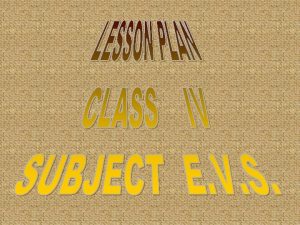Math Games Play One Play Some or Play






- Slides: 6

Math Games Play One, Play Some, or Play them All

Horsesho e Golf Remove all face cards and tens from a deck of cards, so the only cards are from 1 to 9. The leader picks out two cards and forms a two -digit number with them. This is the target number. Then the leader picks four more cards. The goal of the game is to create an equation using only the four digits that were drawn that equals an amount as close as possible to the target. Each player gets points for the difference between their closest number and the target number. The player with the lowest score after 5 rounds wins. In the Example Game below, Student 1 would have 6 points, Student 2 would have 11 points, and Student 3 would have 0, meaning Student 3 is in the lead with the lowest score. Example Game The leader draws a 3 and a 7 and writes the target number 37 on the board. Then the leader draws the four digits 2, 4, 4, and 9. After all the digits are known, there are 2 -3 minutes of quiet, where everyone writes their attempts and equations down on their own paper. When the time is up, the leader calls on people who say what they got, and how they got it. Student 1: I got 43, by taking 49 – 4 – 2. Student 2: I got 48. I took 92 – 44. Student 3: I got 37 exactly! I did 44 – 9 +2.

Factor Captor

Blockout Players choose colors, then take turns rolling the dice, and shading in a rectangle given by the dice rolls. If you roll a 2 and a 5, you can shade in a 2 by 5 (or 5 by 2) rectangle. No one can shade in a square that has already been colored. Your rectangle cannot intersect or be contained in any previously drawn rectangles. If you cannot add a rectangle to the board on your turn, pass the dice to the next player. If all players pass in a row, the game is over. Players get a point for each square they have colored in at the end of the game. You can play in groups of 2 -4. It is also possible to play individually or collaboratively. For a collaborative or solitaire game, players roll and try to cooperatively fill up as much of the board as possible. If every player must pass in a row, the game is over. The fewer the number of leftover squares, the better the game.

Order Up 21

Gameboards are included in the attached document. You can print them out and use them. If you need dice, but don’t have them at home, type “dice roller” into Google and you should get this: Materials Then you can select the dice you need for the game. If you don’t have cards at home, go here: https: //www. random. org/playing-cards/ to help you.











